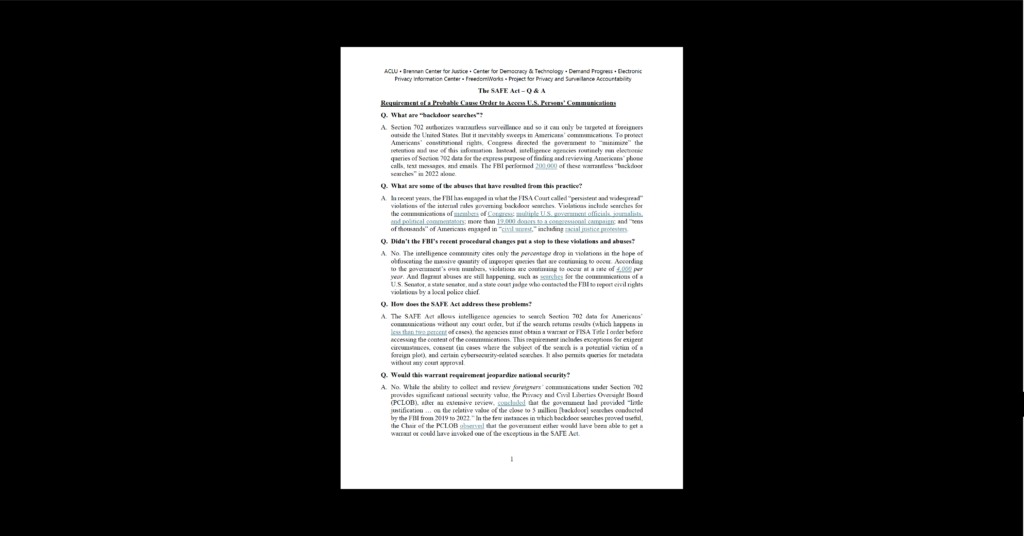Minnesota Law Makes Private Citizens the Eyes of Government Surveillance
Earlier this month Minnesota signed into law a bill in response to the epidemic of smartphone theft. While the law didn’t contain the concerning technology mandates CDT highlighted in a letter to the Minnesota Legislature, it did contain an even more alarming close that would essentially require some citizens to install cameras on private property and become the eyes of government surveillance.
The bill originally required that a “kill switch” be preinstalled in all mobile phones. This mandate was removed, and the law that passed the Minnesota legislature merely requires that phones include or be able to install free “antitheft functionality.” Because dozens of free kill switch apps exist, virtually all smartphones should already meet this requirement. Also, because “antitheft functionality” is not defined, it’s not clear that the ability to install kill switch software is even required. A mere four-digit passcode lock is an antitheft function, albeit a very ineffective one, that exists on practically all smartphones today. So while the law avoids potentially harmful tech mandates, it also does little to change the status quo of smartphone theft.
The law’s greatest – and most troubling – impact actually comes in a completely separate area: surveillance cameras. Subdivision 6 of the law requires that any secondhand seller of smartphones install cameras (at their own expense) to collect images of all buyers and sellers. “Dealer” is broadly defined as any “individual, partnership, limited partnership, limited liability company, corporation, or other entity engaged in the business of buying or selling used wireless communications device,” effectively lumping in any person selling a used phone .
The law requires these individuals to install surveillance cameras at any location where they will buy and sell phones, keeping them in operation for all business hours. Further, the law requires that all videos and images be retained for at least 30 days. And perhaps most problematically, the law requires that the video recorded “at all reasonable times be open to the inspection of any properly identified law enforcement officer,” a process that should surely require a warrant to compel compliance.
This surveillance camera provision is troubling for several reasons. While cooperation with law enforcement is a common practice, to make private surveillance mandatory rather than voluntary raises fundamental questions over the reach of government power. Law enforcement drafting private citizens to facilitate government surveillance is a practice more akin to a dystopian sci fi novel than a democracy.
The specific method of co-opting the public is also troubling. Video surveillance already raises major privacy concerns, and will do so to an even greater degree as facial recognition technology improves, and government builds on existing efforts to employ it on a national scale. To require private businesses and citizens to install cameras, retain video, and allow law enforcement access would dramatically expand the scope of the government surveillance over average Americans. Further, it would do so with no cost to the government, placing the burden of paying for this expansive growth in government surveillance power on citizens.
With government expressing a “collect it all” mentality, Minnesota’s new video surveillance law sets a bad precedent that lawmakers and the public should not accept. Minnesota should reconsider this controversial provision of its recently passed law, and other states as well as the federal government, should refuse to adopt similar policies that force the American public to act as the eyes of government surveillance.


